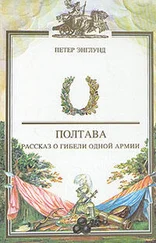Therefore, any foreigner who makes the most modest attempt to speak their mother tongue is usually greeted with boundless enthusiasm and support (see: Communication). But remember one crucial fact: the Czechs revel in self-flagellation, and often compete with each other to come up with the cruellest remarks about themselves and their country. If you, as a foreigner, do the same, even if your Czech is brilliant and your complaint is totally justified, you’ll be hated forever!
Life in communist Czechoslovakia had more than its fair share of absurd elements, but few things could beat the dancing schools. Just think about it: a Stalinist country (after 1968 neo-Stalinist), which was ruled by the proletariat’s dictatorship and officially worshipped Soviet culture, openly tolerated the existence of an institution so thoroughly petit bourgeois and reactionary as dancing schools. An American equivalent would probably be Joe McCarthy taking private lessons to learn to play the balalaika...
Yet due to a wholly unexplainable display of tolerance after their takeover in 1948 (see: Communism), the Bolsheviks decided not to replace the bourgeois dancing schools with something more progressive and Soviet-friendly, but let parents send their pubertal offspring to the courses, which they themselves had attended some decades earlier. Obviously, not even the Velvet Revolutiondid anything to change this. As a result, the traditional dancing schools from the heyday of the Austro- HungarianEmpire are still alive and kicking in the Czech Republic.
As the term itself indicates, the purpose of the dancing schools is to teach the youngsters the basic principles of a handful of the most common ballroom dances. But since the courses are attended by both young men and young women, the dancing school lessons also contain instructions about the basics of social manners according to long-established Central Europeanprotocol. In other words, they teach a young man not only how to lead a woman in a waltz, but also to behave gallantly and open the door for her, helping her with her coat or protecting her against any external danger.
Seen from a Western and politically correct standpoint, this represents a problem. In short: supporters of Western-style feminismwill claim that the dancing schools cement gender roles, which they have tried to eradicate for several decades. Most Czech women, though, will probably claim that the ballroom dances are just another area of life where Czech men are allowed to behave like machos, while in reality they are totally controlled by their strong-willed women...
In any case, every October, when the dancing school season begins, the streets are filled with 15-16-year-old acne-pimpled boys and girls rushing to their lessons. Contrary to the Germansand Austrians, who have also kept this tradition, but in a laid-back and modernized version, the Czechs are painstakingly mindful of the formalities: the boys are obligatorily dressed in dark suits (usually too big and borrowed from dad) and bowtie or smoking, and their sweaty hands are covered with white gloves when dancing.
Indeed, the formalities are enforced with such vigour that dancing schools are probably the only place in the entire Czech Republic where a man can’t be seen wearing sandals and socks. The girls are expected to wear frocks, but due to the peculiarities of the Czech dress code, also mini-skirts are tolerated. More rarely these days, mom accompanies her daughter as a chaperone.
One of the reasons why hordes of youngsters are still signing up (or rather, their parents are signing them up) for the dancing schools is utterly practical. From November to March, every thinkable Czech organization, from the government to the Union of Fire Fighters down to the village’s Stamp Collectors Club, organizes a ball.
This is an event of huge social importance, where any image-conscious person should turn up, and it is widely recognized as a perfect place for a man to make advances towards a woman. Just keep one thing in mind: while you are allowed to be as drunk as you please (see: Alcoholics), and can probably also have sexin the cloakroom with your colleague’s wife without causing any locomotion, you will completely discredit yourself if you don’t master at least the basics of ballroom dancing!
Denmark is one of those few European nations that have never in history done a single bad thing to the Czechs (see: Austrians; Germans; Hungarians; Poles; Russians). Yet this small and peaceful nation has got the dubious honour of starring in a well-known Czech saying: pít jako Dán (to drink like a Dane), which actually means to drink yourself dead-drunk, or respectively, that you have a serious drinking problem (see: Alcoholics).
This is by all means unjust to the Danes. True, Shakespeare already concluded long ago that there was something rotten in their country. And it’s also true that the Danes have a more relaxed attitude towards alcoholic beverages than other Nordic countries. Yet to most of the worldtheir civilized drinking culture may serve as a model, and not to be made an example of. So why have the Czechs stigmatised them in this cruel way?
One explanation might be that the Czechs invented “drink like a Dane” just to avoid “drink like a Czech”, which would have taken its toll on their national identity. Of course, they could, with great justification, have tried “drink like a Russian”, but in that case they would have risked provoking a much bigger and often touchy country. Small and distant Denmark, on the contrary, represented the ideal scapegoat.
However intriguing these theories might sound, the actual explanation is to be found in the Czech language, or, to be more precise, in its impressive creativity.
In the beginning of the twentieth century, the Czechs started to import a blotting paper from Denmark. The sales were formidable, because the Danish blotting paper was more effective than any other in use at that time (see: Bureaucracy). In Czech, this product is called sací papír (literally “sucking paper”). Now, take a look at the verb sát/nasávat (to suck), which in slang means to drink heavily. Thus, the link is clear: a person who boozes as thoroughly as the Danish paper blotted ink, was simply called a Dane.
So, while the Danes’ blotting paper has long been obsolete, their unjustified reputation as heavy drinkers is still alive and kicking. Poor Danes...
A dictionary will tell you that the word defenestration is of Latin origin, and that de fenestra can be translated as out of a window . Thus, defenestration describes an action, where something — or rather, somebody — is thrown out of a window.
This might occur to you as a totally irrelevant piece of information — as long as you’re not in the Czech Republic. In this country’s history, defenestration plays a very significant part. It’s still a bit unclear how many of them deserve the label “historic” (were they two or three?). What’s undisputed, though, is that all of them took place in Prague, and all of them had a tremendous impact on political developments in Bohemiaand Moravia.
The first and indeed historic defenestration happened on July 30, 1419, four years after Jan Hus, the Czech cleric who thundered so intensely against the trade with indulgences that the Catholic Church (see: Religion) chose to burn him at the stake. Hus’ Protestant supporters — the Hussites — immediately started to revolt against the Catholic Church and its royal protector, King Václav IV. While the Hussites soon gained support from the reformist counsellors of Prague’s Old Town, (heir colleagues in Prague’s New Town had absolutely no sympathy for the rebels.
Читать дальше








![Theresa Cheung - The Dream Dictionary from A to Z [Revised edition] - The Ultimate A–Z to Interpret the Secrets of Your Dreams](/books/692092/theresa-cheung-the-dream-dictionary-from-a-to-z-r-thumb.webp)



